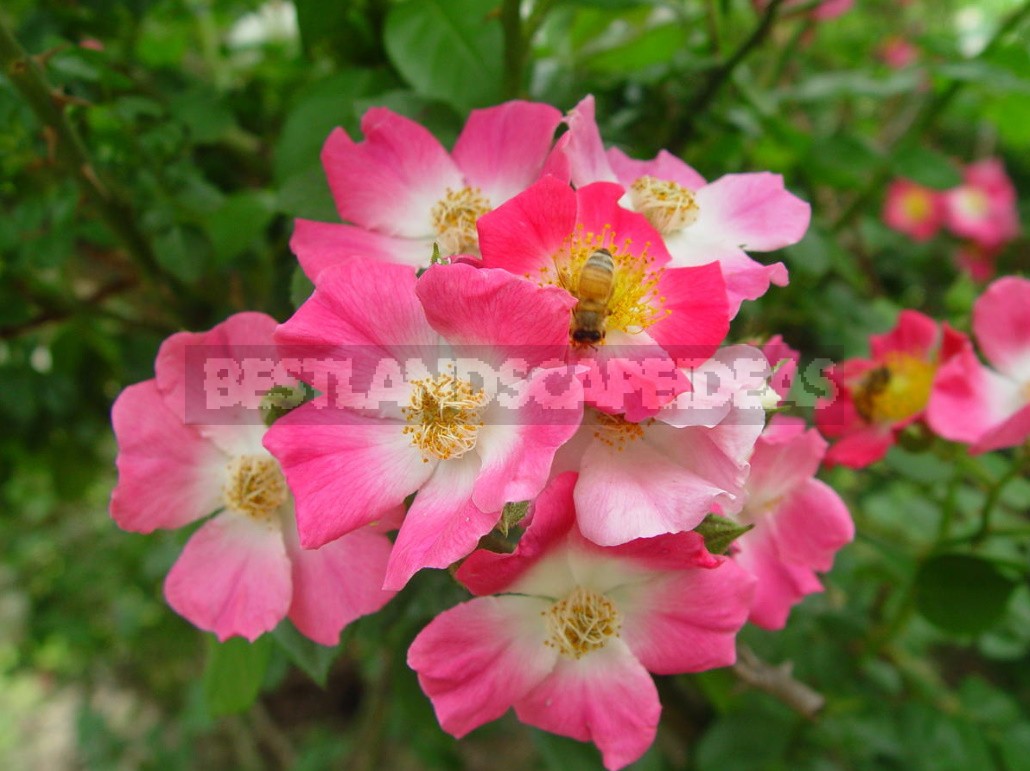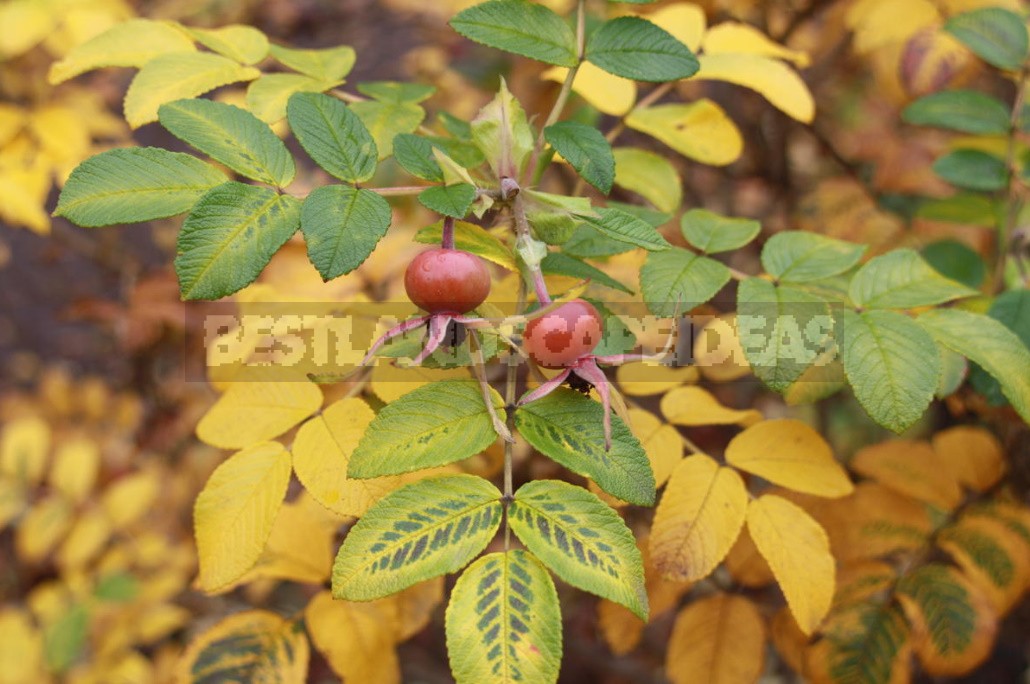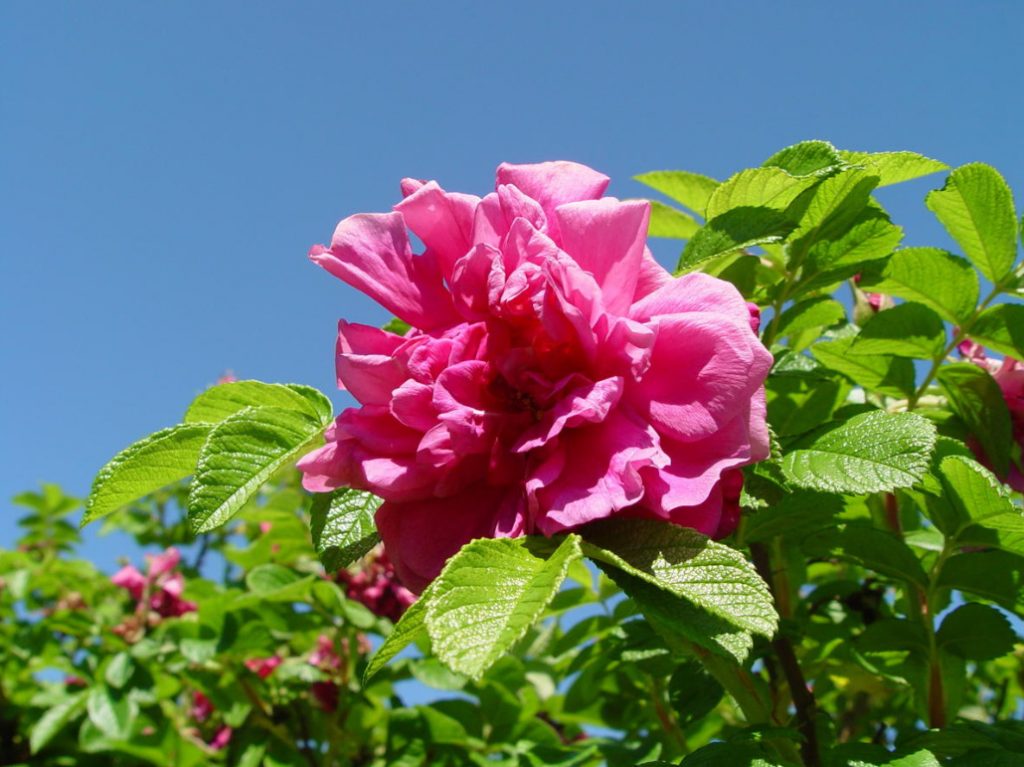About how, that Rosa-Queen day-care services, know all. We love when roses bloom, adore these plants for their unique appearance, for the amazing delicate aroma. But speaking of roses, we usually do not even think about their wild relatives-briers. Although many of them bloom and more abundant, and longer.
Rose hips (and their Latin name – Rosa) on the site we either do not grow at all, or very rarely allow them to enter their territory, because these plants form large bushes, prickly, sometimes they grow and capture a lot of space. And to put in order a thicket of a Rosehip, to keep it on the limited area-business quite laborious.

We are traditionally used to seeing rose hips in parks and squares or in urban landscaping. Although if the territory of the garden allows, then some people still use them as a green fence or as a beautiful flowering shrub. But if you think about it, they should take their rightful place in our gardens. Why, you ask?
Useful properties of rose hips and its application in folk medicine
First of all, we need them not so much as decorative, but more as useful plants, although some species of rose hips bloom very long, abundantly and retain their decorative effect for a very long time, which we often forget, and even more often-just do not know. But the value of these plants for us increases many times, if we begin to collect and process the fruits of wild rose.

Often, if summer residents and plant rose hips on the site, it is for the sake of these delicious, valuable and useful fruits, as well as the seeds contained in them. By the way, the” fruit “of the rosehip is hypanthium, an overgrown flower, and the “seeds” are nuts. But you can still collect rose hips and flower petals, which in dried form are added to tea or used as a fragrance for tea drinks, liqueur tinctures, improving the taste of a number of herbal decoctions. And we almost do not use the roots of wild roses – the most valuable medicinal raw materials, which in folk medicine of some peoples is revered as a panacea for many ailments.
Species in the genus rosehip about 400, many of them are endemic. Most of them can be successfully grown in our country, and it is easy to get a good harvest of fruit from them every year. But you can collect and harvest the fruits of wild species, if you are still too lazy to grow them on your dacha.

Rose hips are valuable because they contain various biologically active substances in all organs. The most often we still use fruits, because we know that they have a lot of vitamins (not only C, but also P, b group and many others) and flavonoids, and seeds have a lot of fatty oil. In scientific and folk medicine, dried ripe fruits of different types of rose hips serve as vitamin raw materials.
Inside the fruit is used as a decoction, infusion, syrup for rheumatism, pulmonary tuberculosis, respiratory infections, neurasthenia, atherosclerosis, headache, kidney disease, liver, stomach, burns, tumors. Decoction, infusion of fruits are also used externally – in the treatment of wounds, burns-in the form of lotions.
Various dosage forms, syrups, jams, compotes, jams or ready-made pharmaceutical preparations of rosehip are used in iron deficiency and other anemias, chronic and acute infections, nephritis, in the preoperative period and after surgery, chronic and acute pneumonia, vascular diseases of the brain, eye diseases, as a choleretic agent for cholecystitis, salt metabolism disorders.

Oil extract of fruits and rosehip seed oil is used externally for trophic ulcers, some diseases of the skin and mucous membranes; for bedsores, dermatoses, burns, radiation lesions of the skin. It is also rubbed into the scalp to improve the growth and quality of hair.
Decoction of seeds is used as a diuretic, with urolithiasis, diarrhea; externally – with gingivitis. Infusion of rosehip leaves is used as an antibacterial and analgesic for colitis, gastritis. A decoction of flowers is used in pulmonary tuberculosis, neurasthenia, atherosclerosis, and for rinsing of the mouth as a deodorizing agent. Infusion of petals is used as an analgesic and astringent in diseases of the stomach, liver, heart; it is effective for washing the eyes with conjunctivitis.
Decoction of the roots has choleretic, astringent and antiseptic properties, is used in kidney stones, cholelithiasis and urolithiasis, enteritis, colitis, cystitis, liver disease, anorexia, respiratory infections, rheumatism, paralysis, as a diuretic and fixing agent; for baths with rheumatism and paralysis.
But, despite such a variety and numerous useful properties of rose hips, it is important to remember that you should not still get carried away with self-medication. In everything, the measure is important; frequent and abundant use of rosehip preparations contributes to the development of cancer.






